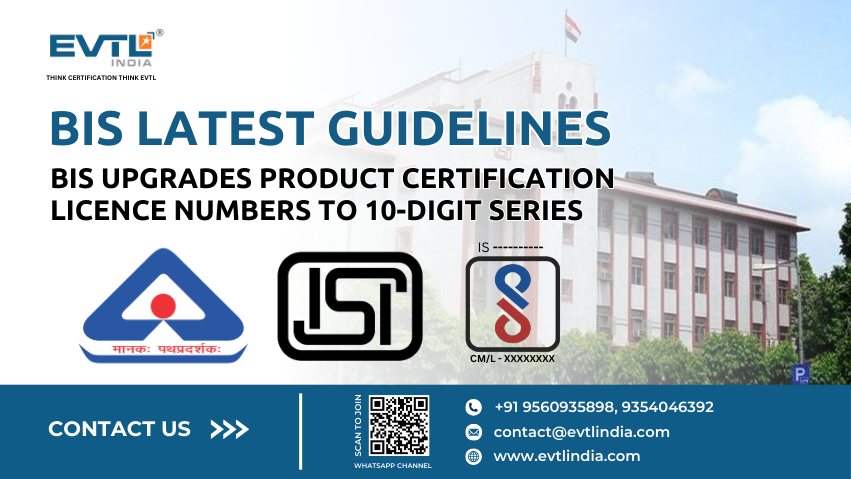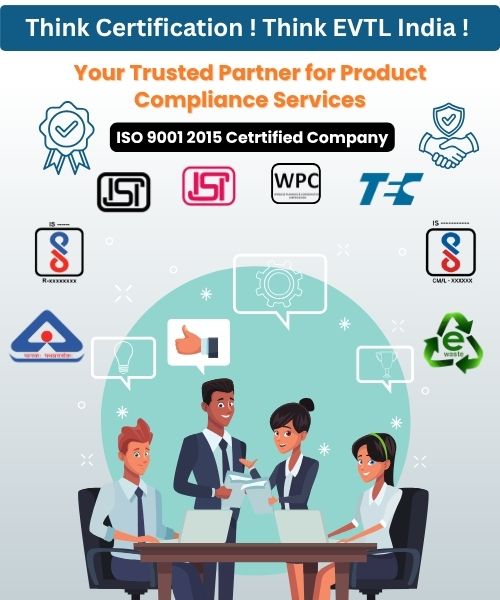Get A Quote
Guidelines for Implementation of Essential Requirements for Security of CCTV

In today's digital age, CCTV cameras play a crucial role in maintaining security and safety. However, the security of CCTV equipment itself is just as important as the security it provides. To address this, the Ministry of Electronics & Information Technology (MeitY) in India has set new guidelines, known as "Essential Requirements for Security of CCTV," to ensure that CCTV systems meet certain safety and security standards. Below is a simplified breakdown of these guidelines and what they mean for CCTV manufacturers and users.
Why Do We Need These Guidelines?
The guidelines aim to make sure that CCTV cameras and recorders are safe and secure. These products must comply with specific safety standards, ensuring that they not only function well but also do not pose a security risk. For example, CCTV equipment must comply with safety standards specified in IS 13252 (Part 1): 2010 or IEC 60950-1: 2005, which outline general safety requirements for information technology equipment. By following these guidelines, manufacturers can provide safe, reliable products to the market, while users can trust that their security systems meet necessary standards.
Also Read: BIS Certification for CCTV Cameras /CCTV Recorders IS 13252 (Part 1): 2010
Key Dates and Compliance Deadlines
On April 9, 2024, MeitY released a notification setting "Essential Requirements for Security of CCTV." The deadline for compliance with these requirements is April 9, 2025. By this date, all CCTV models being manufactured, imported, or distributed in India must meet the new security requirements.
To help manufacturers comply, MeitY has provided a testing process on the BIS (Bureau of Indian Standards) portal. All CCTV models must go through testing to ensure they meet the new security standards, and the test reports must be prepared by accredited third-party labs.
Testing and Compliance Process
To meet these security requirements,
manufacturers need to:
● Submit Test Reports: Each CCTV model
requires a test report that confirms it meets security requirements.
● Identify Series Models: Manufacturers
must submit reports for each "series" of models, showing the
similarities and differences between them in terms of hardware and software.
● Maintain Uniformity: Products within the same series should have the same core components, such as the processing chip and software version, to ensure consistent performance and security.
Steps for Existing CCTV License Holders
For companies that already hold licenses
for CCTV cameras under existing safety standards:
● Apply for Essential Requirements Compliance: They must submit test reports for their current models by April 9,
2025, and apply through the "Apply for Standard Revision/Amendment"
module on the BIS portal.
● Pay Necessary Fees: A fee of ₹30,000
plus taxes per application is required, with additional charges for each extra
test report.
● Receive Compliance Confirmation: If the models meet the requirements, BIS will issue a compliance letter listing all approved models.
After April 9, 2025, any model that does not comply will be removed from the license. If none of a company’s models meet the requirements, the license may be canceled.
Guidelines for New CCTV Manufacturers
For new applicants entering the CCTV
market:
● Include Test Reports: All new
applications for CCTV products must include the test report for Essential
Requirements by April 9, 2025. Until then, applications can be submitted with a
declaration that the company will comply by the deadline.
● No License Post-Deadline Without Compliance: After April 9, 2025, no new CCTV licenses will be issued unless the products fully meet the Essential Requirements.
Changes to Existing Licenses
If manufacturers wish to add new models to
an existing license:
● Submit Test Reports: Inclusion
applications must include both the general safety test report and the Essential
Requirements test report until April 9, 2025.
● Post-Deadline Requirements: After April 9, 2025, no additional models can be added to a license without meeting the security guidelines.
Labeling for Compliant Models
Models that meet the Essential Requirements
can display the following label on their packaging:
“This CCTV camera complies with Essential Requirement(s) for Security”
This label informs consumers that the product meets all mandatory security standards, providing peace of mind about the safety and security of their CCTV equipment.
Series Guidelines for CCTV Products
To ensure uniformity in CCTV products
within a specific series, the following standards apply:
● System-on-Chip (SoC): All models in a
series must use the same SoC for consistent performance.
● PCBA Layout: The core components, such
as microcontrollers and sensors, must be in the same configuration across the
series, even if other parts, like the lens or housing, vary.
● Communication Protocols: All models must
support the same wired or wireless protocols (e.g., Wi-Fi, Bluetooth).
● Software Version: All models in a series
must run the same software/firmware version with identical hash values to
ensure security.
● Hardware Bill of Materials (BoM):
Critical hardware components should match across the series, with only minor
variations allowed (e.g., sensors or capacitors).
● Software BoM: The software components, including firmware, operating system parts, and any third-party software, must also match across all products in the series.
Essential Details on Certification
The issued certificate will include key
details like:
-
Product image
-
Model number
-
Chipset information (origin, make, and model)
- Firmware version with hash value
Any changes in the product must be accompanied by a differential analysis report to show how the model differs from the originally tested version.
In Summary
The "Essential Requirements for Security of CCTV" provides a clear framework for manufacturers to ensure their CCTV products meet high standards of safety and security. By April 9, 2025, all CCTV models in India must comply with these guidelines to stay on the market. For manufacturers and consumers alike, these guidelines promote trust in the reliability and security of CCTV systems, protecting both personal and public safety.
You can contact us via email at contact@evtlindia.com or by phone at 9560935898. Feel free to get in touch with us anytime for the support you need.
BIS ISI Mark Certification | BIS-CRS Certification | EPR E-WASTE | WMI Registration | BIS Certification For Footwear | TAC & IMEI Registration | BIS FMCS Page | TEC | EPR Registration for Plastic Waste Management | EPR Registration for Battery Waste Management | EPR Registration For Used Oil | EPR Registration for Tyre Waste Management | WPC ETA License | NOC | LMPC | Legal Metrology | Trademark Registration | ISO Certification | EMI-EMC Test | Toys | GEM Registration | EPCG Scheme | LM 79 & LM 80 | ROHS Approval | CDSCO Registration | RF Testing | IP Rating Test | MSME & NSIC Registration | BIS Certificate for Conformity | BIS Scheme-X Certification | Hallmark Registration | Laboratory Recognition Scheme | ECO-MARK Certification | RDSO | CE Certification | List Of Equipments | US FDA Registration | Lab Setup & Lab Equipment |
Recent Posts

BIS Certification No Longer Mandatory for 14 Chemical & Polymer Categories

BIS Extends Implementation Deadline for Revised IS 18112:2025 – Digital Television Receivers for Satellite Broadcast Transmission

Government Withdraws Quality Control Orders for Six Chemicals – BIS Certification No Longer Mandatory

BIS Upgrades Product Certification License Numbers to 10-Digit Series

BIS Guidelines for Scheme-X Certification for OTR-Regulated Products
Free Call Back
Why Choose EVTL INDIA
Expertise in Indian Regulatory Standards
End-to-End Support
Trusted by Top Indian & Global Brands
Fast Processing & Transparent Pricing
Strong Liaison with Indian Authorities
Company Profile














